d+Au ridge: More Peripheral, More Central with Primary Tracks
Motivation:
In d+Au Ridge study, 0-20% and 40-100% have been analyzed for central and peripheral. See drupal.star.bnl.gov/STAR/blog/yili/dau-ridge-global-tracks-inclusive-charge.
Cent-R*Peri method has been discussed and two double-ridge is found.
Here we'd like to go to more peripheral 60-100% and more central 0-10% to investigate whether conclusion will be affected. Or in another word, if there is flow/ridge in 40-100%, how large the contribution will affect the subtraction result.
For global track result, see drupal.star.bnl.gov/STAR/blog/yili/dau-ridge-more-peripheral-more-central
Here the primary track results are presented.
Method:
Dihadron correlation.
Fit near-side Δη with Gaussian + Pedestal. Fit parameters Y for Gaussian area, σ for Gaussian width, C for pedesta. For both central and peripheral.
1. Near-side jet yield central over peripheral ratio R.
2. Cent - R x Peri for dihadron correlation
Primary tracks.
Data set:
Run3
|Vz| < 50 cm
nHitsFit > 25 points for TPC
nHitsFit > 5 points for FTPC
nHitsFit/nHitsPoss >= 51%
globa dca < 3 cm
|eta|<1 for TPC
2.8<|eta|<3.8 for FTPC
1<pT<3 GeV/c
Primary tracks
Results:
1. Near-side jet Δη distribution
Both trigger and associated particles in TPC
FTPC centrality
R = Y^cent / Y^peri = 1.404
 |
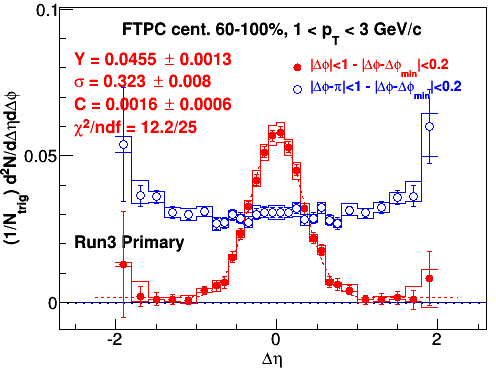 |
ZDC centrality
R = Y^cent / Y^peri = 1.199
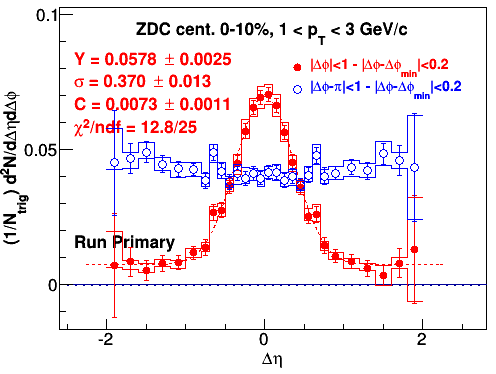 |
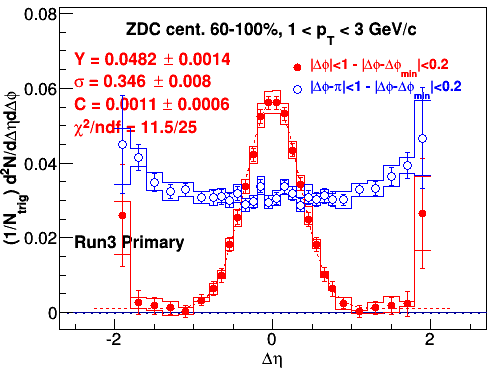 |
2. Cent - R x Peri
FTPC centrality
TPC x TPC correlations
 |
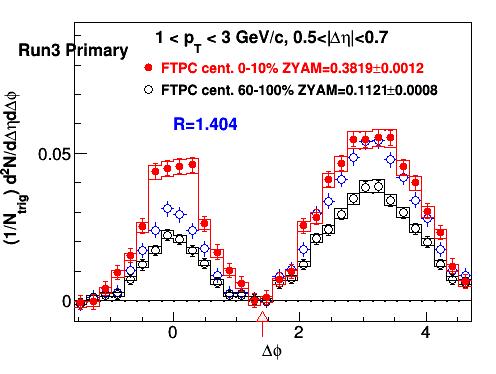 |
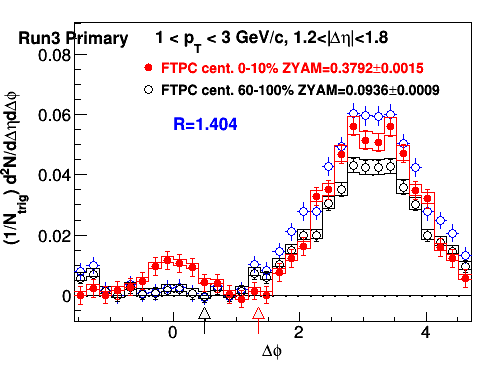 |
Red for central. Black for peripheral. Blue for scaled peripheral, scaled by R = Y^cent/Y^peri.
Cent-RxPeri
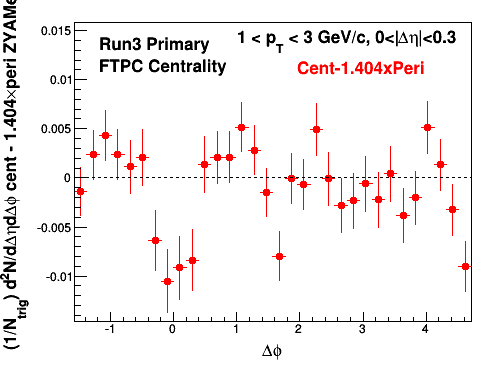 |
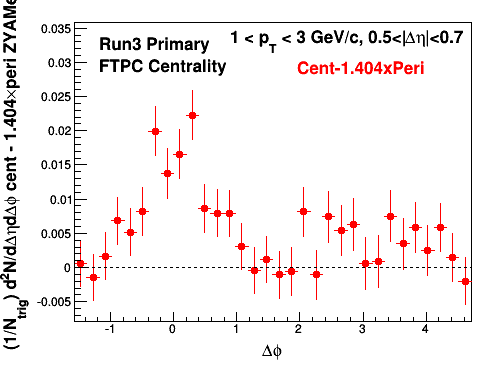 |
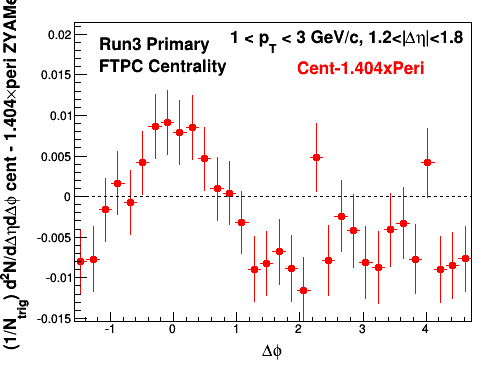 |
ZDC centrality
TPC x TPC correlations
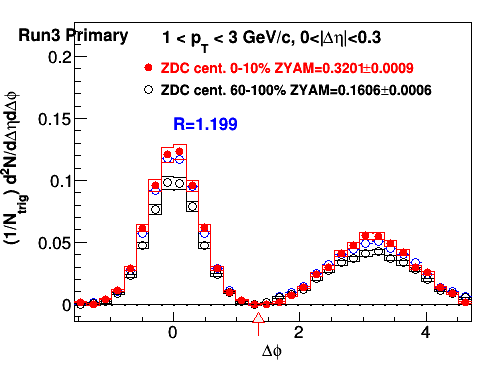 |
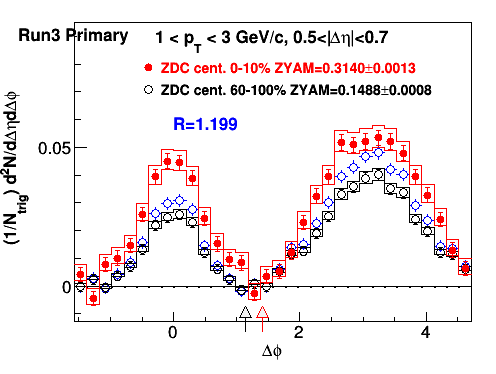 |
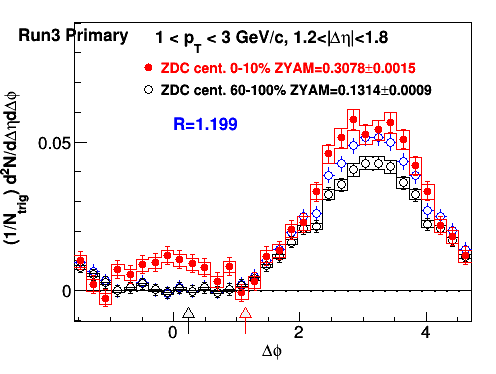 |
Red for central. Black for peripheral. Blue for scaled peripheral, scaled by R = Y^cent/Y^peri.
Cent-RxPeri
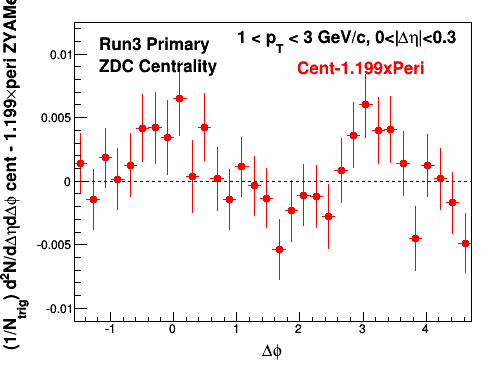 |
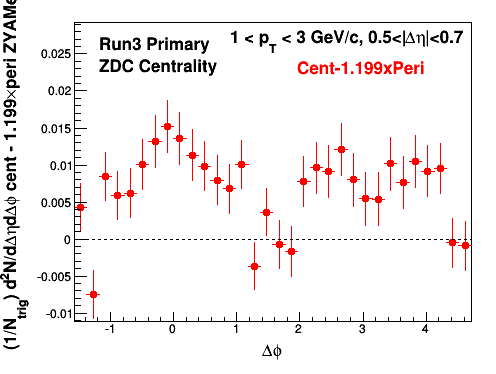 |
 |
- yili's blog
- Login or register to post comments
